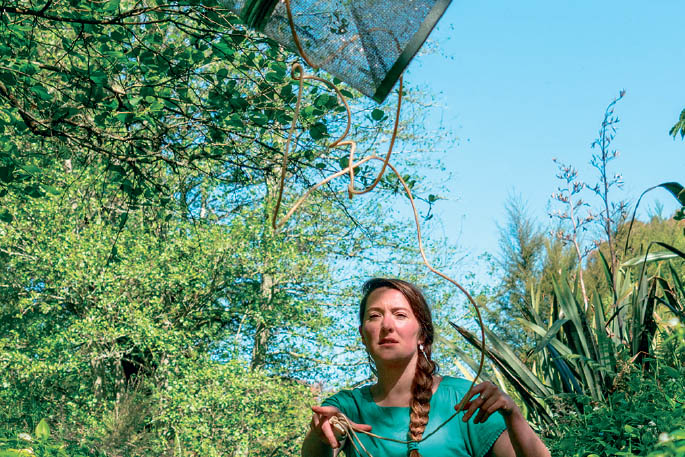As a young child growing up on an Irish farm, one of Eimear Egan’s chores was to regularly clean out the well from where her family drew its drinking water. In the well lived a large eel that, no matter how many times it was shifted, just kept coming back.
“I was traumatised by it for years, says Eimear. “It bit me several times.”
The eel got the last laugh. Now Eimear, a NIWA freshwater ecologist based in Hamilton, is studying eels and what makes them tick. She’s leading a team that recently secured a grant from the Ministry of Business, Innovation and Employment Endeavour Fund for a three-year project to enable her to do “some very exciting research” on both longfin and shortfin eels.
Longfin and shortfin eels spend a portion of their life in marine and coastal environments. Once the adults reach sexual maturity in freshwater they migrate to the western Pacific Ocean to reproduce.
The resulting larvae are transported by ocean currents back to NZ’s coastline where they develop into glass eels, at this stage up to 7cm long. The marine phase of their life cycle is mysterious and poorly understood.
Eimear and her team will be studying the ear bones of glass eels to learn more about their spawning locations and larval oceanic movements.
“Longfin eels are only found in NZ, and according to the NZ threat rankings, they are at risk and declining. At the moment, we don’t really have a good understanding of their early life history including locations of spawning grounds and larval migration routes.
“This information is important because we don’t know if the numbers of glass eels making it to NZ are affected by processes happening during their marine life. We are going to use some quite novel methods to help fill in these knowledge gaps.”
That’s where examining glass eel ear bones comes in. “Ear bones can tell us so much information about the environment a fish experiences on a daily basis,” says Eimear.
“Each day they add a layer of calcium carbonate which is almost like keeping a diary of their lives.
“They tell us about their growth, spawning and hatching dates, the chemistry of the environment they live in, their diet and movement. And because of that daily layer we can potentially figure out what routes the larvae took to get to the NZ coastline.”
The researchers hope to understand if the eels are coming from different places within the western Pacific Ocean, and whether long and shortfin eels share spawning grounds and larval migration routes.”
There is evidence of a worldwide decline in recruitment of glass eels, particularly for the European and Japanese species.
Factors contributing to this decline are likely to include climate change, loss of habitat, pollutants, over-fishing, and obstacles to migration.



0 Comments
Leave a Comment